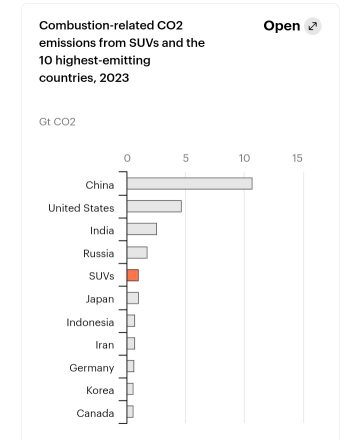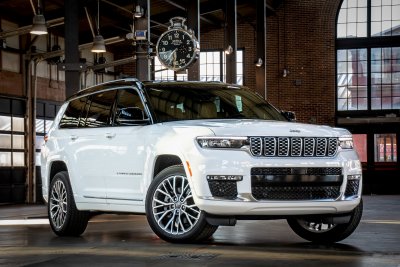▪︎SUV jeep. Image credit: Newsweek.com
Sports Utility Vehicles (SUVs) account for 20 per cent of carbon dioxide (CO2) emissions globally.
The report, by the International Energy Agency (IEA) Analysts Mathilde Huismans, and Jules Sery, said SUVs weigh 200-300 kg more than an average medium-sized car and typically take up nearly 0.3 m2 more space – emitting roughly 20% more carbon dioxide (CO2) emissions. The trend towards heavier and less fuel-efficient cars increases energy demand, including oil and electricity use, as well as demand for basic metals and critical minerals needed for battery production.
Over the course of 2022 and 2023, global oil consumption directly related to SUVs rose by a total of over 600 000 barrels per day, accounting for more than a quarter of the overall annual growth in oil demand.
In 2023, there were more than 360 million SUVs on the roads worldwide, resulting in combustion-related CO2 emissions of 1 billion tonnes, an increase of around 100 million tonnes from the previous year.
This accounted for more than 20% of the growth in global energy-related CO2 emissions last year. The annual increase in CO2 emissions attributed to the rise of SUVs is equivalent to about half of the emissions growth stemming from the global electricity sector.
Compared with smaller cars, SUVs are also associated with higher indirect emissions resulting from producing the materials used to manufacture them.
If ranked among countries, the global fleet of SUVs would be the world’s fifth largest emitter of CO2, exceeding the emissions of Japan and various other major economies.
Around 30 million SUVs with internal combustion engines were added to the global fleet in 2023, comparable to the total number of electric cars on the roads today.

In 2023, there were 500 electric car models available worldwide, of which 60% fell under the SUV category, marking a significant increase from previous years.
This trend is further reinforced as automakers plan to introduce a greater number of electrified SUV models in the near future.
Globally, SUVs now account for approximately 45% of the electric car fleet, a share that would be even higher were it not for the strong growth of small electric cars in urban areas in China.
In advanced economies, the share of SUVs among electric cars is even higher at 55%. This is due to limited availability of smaller and more affordable compact models.
Despite advances in fuel efficiency and electrification, the trend toward heavier and less efficient vehicles such as SUVs, which emit roughly 20% more emissions than an average medium-sized car, has largely nullified the improvements in energy consumption and emissions achieved elsewhere in the world’s passenger car fleet in recent decades.

